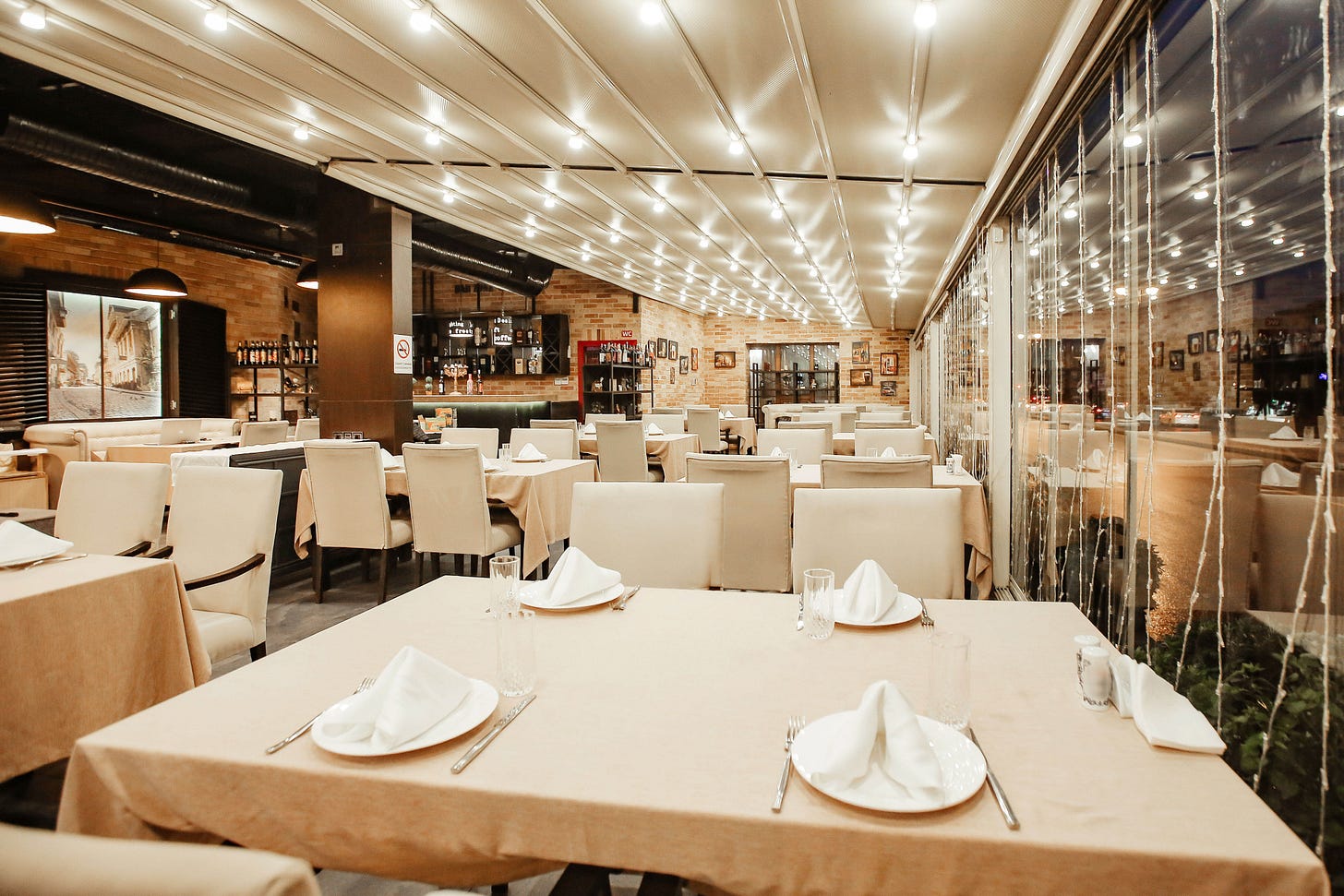The paradox of restaurants is that excellence gives you a chance to succeed, but never a guarantee. What can separate the survivors from the fallen is not just flawless execution, but whether they managed to capture and hold onto that unexplainable spark that makes a restaurant feel like more than just another place to eat. Failure is explained away by poor execution, bad food, or weak service. But there’s a more painful reality that seasoned operators know well. Sometimes, restaurants fail even when they’ve seemingly done everything right.
Fragile Location
Even with the best menu and service, the wrong location can slowly bleed a restaurant dry. A prime street corner can suddenly become a dead zone if traffic patterns change, nearby construction drags on for years, or a major anchor tenant leaves a shopping complex. Unlike retail chains that can absorb losses across multiple outlets, a single independent restaurant is fully exposed to these shifts. Sometimes, a street or district simply “goes cold,” and no amount of culinary excellence can compensate.
Cost Spiral
Restaurants in high-cost locations operate on notoriously thin margins, often between 3–5 percent. Even when the dining room is full and online reviews glow, one unexpected increase can throw off the balance. A landlord raising rent by 20 percent, a sudden rise in minimum wages, or surging electricity prices can tip the equation into unsustainability. Operators who have perfected their operations are not immune to structural cost increases, they simply have less room to maneuver.
Shifts in Consumer Behavior
Dining trends evolve quickly, sometimes brutally. A restaurant may have captured the zeitgeist perfectly five years ago, only to discover that consumer interest has shifted elsewhere. Consider the decline of buffet dining, or the sudden surge in demand for delivery and takeout during and after the pandemic. A steakhouse, sushi bar, or fine dining room may have executed brilliantly within its category, but if diners migrate toward healthier eating, faster formats, or more casual experiences, excellence in the “old” model may not be enough to survive.
Market Saturation
Some restaurants fail not because they lack quality, but because they exist in a market that is simply oversaturated. In many urban centers, the number of new restaurants opening outpaces population or tourist growth. This creates a zero-sum game where even great restaurants fight for a slice of a static pie. A polished operation can still get lost in the noise if a dozen equally strong competitors open within a few blocks.
Macro Shocks
External events play a cruel role in restaurant survival. The pandemic taught the industry that no amount of good planning can withstand global disruption without deep reserves or structural adaptation. But beyond pandemics, restaurants are vulnerable to recessions, currency fluctuations, and tourism cycles. A restaurant may be thriving one year and collapsing the next, not because it changed, but because the surrounding economy shifted in ways it could not anticipate.
Good Isn’t Good Enough
Restaurants compete not only with one another but also with every alternative use of a customer’s money and time. A restaurant may be technically excellent but lack that emotional pull, such as a signature dish, a charismatic owner, or a sense of belonging. That turns occasional visitors into loyal regulars. Without repeat business, even the best operations cannot sustain themselves, unless they are in a high traffic or popular tourism location.
Investor Pressures
Behind many failed restaurants are partnership conflicts or investor expectations misaligned with reality. A restaurant can be popular, well-run, and still be deemed a failure if it does not deliver the financial returns investors demand. In many cases, partners disagree on strategy, expansion, or cost controls. The public may see a thriving dining room, but behind the scenes the business is unraveling because of decisions unrelated to food or service quality.
The “Magic Touch”
And then there is the intangible factor, the one no business plan can fully capture – the restaurant’s magic touch. It’s not on the menu, not in the décor, and not taught in hospitality schools. It’s the invisible ingredient that makes guests feel alive in a space, makes them linger just a little longer, and makes them return again and again.
At its core, this magic touch is rooted in authenticity, the sense that the place is true to itself, its story, and its people. Sometimes it comes from the charisma of the owner, sometimes from the energy of a team that radiates warmth, and sometimes simply from the “soul” of a place that feels genuine rather than manufactured.
A perfect restaurant can fall flat, while a small, imperfect operation can thrive against all odds, because it exudes honesty, warmth, and a sense of community. That ineffable ingredient often makes all the difference.
Image Credit: https://freepik.com
_ _ _
© CHURRASCO PHUKET STEAKHOUSE / ALL RIGHTS RESERVED
Reprinting, reposting & sharing allowed, in exchange for a backlink and credits
Churrasco Phuket Steakhouse serves affordable Wagyu and Black Angus steaks and burgers. We are open daily from 12noon to 11pm at Jungceylon Shopping Center in Patong / Phuket.
We are family-friendly and offer free parking and Wi-Fi for guests. See our menus, reserve your table, find our location, and check all guest reviews here:
https://ChurrascoPhuket.com/
#Churrascophuket #jungceylon #phuketsteakhouse #affordablewagyu #wagyu

